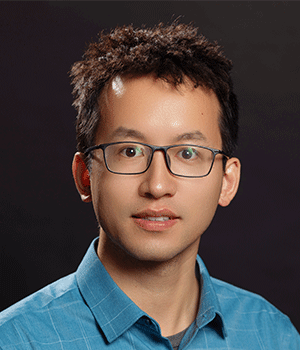
- gehe@uwm.edu
- Engineering & Mathematical Sciences 845
Ge He
- Visiting Assistant Professor, Biomedical Engineering
Dr. He’s research focuses on applying and integrating theoretical approaches, computational models and in vitro/in vivo experiments to:
- Understand and characterize tissue behaviors under physiological and pathological conditions, e.g., myocardial and brain tissue
- Design and optimize blood-contacting medical devices, e.g., extracorporeal membrane oxygenation (ECMO) and left ventricular assist device (LVAD)
His works have been published in top biomechanics journals, e.g., Journal of Biomechanics, Journal of the Mechanical Behaviors of Biomedical Materials, and Journal of Biomechanical Engineering.
Education
- Postdoctoral Researcher, University of Maryland, 2021
- PhD, Mississippi State University, 2019
- MSC, Harbin Institute of Technology, 2015
- BSC, Xihua University, 2013
Research Interests
- Computational biomechanics
- Development of biomedical devices
- Mechanics modeling of biological materials
Selected Publications
-
He, Ge, Fan, L., “A transversely isotropic viscohyperelastic-damage model for the brain tissue with strain rate sensitivity”, Journal of Biomechanics, 151, 2023, 111554
-
He, Ge, Xia, B., Feng, Y., Chen, Y., Fan, L., Zhang, D.-S., “Modeling the damage-induced softening behavior of brain white matter using a coupled hyperelasticty-damage model”, Journal of the Mechanical Behavior of Biomedical Materials, 141, 2023, 105753
-
He, Ge, Fan, L., “Investigating the Head Impact Force-Induced Evolution of Hyperphosphorylated Tau Proteins in Brain Tissue through Mechanical Mesoscale Finite Element Simulation”, Acta Mechanica Solida Sinica, 35, 2022, 705–715.
-
Han, D., Zhang, J.-F., He, Ge, Griffith, B. P., Wu, Z.-J∗., “A Prestressed Intracellular Biomechanical Model for the Platelet to Capture the Disc-to-Sphere Morphological Change from Resting to Activated State”, International Journal of Computational Methods, 19(10), 2022, 2250021
-
He, Ge, Fan, L., Liu, Y.-C., “Mesoscale simulation-based parametric study of damage potential in brain tissue using hyperelastic and internal state variable models”, Journal of Biomechanical Engineering, 144(7), 2022, 071005. (Editor’s Choice Paper Award)
-
Han, D., Leibowitz, J.L., Han, L., Wang, S.-G., He, Ge, Griffith, B. P., Wu, Z.-J∗., “Computational fluid dynamicsanalysis and experimental hemolytic performance of three clinical centrifugal blood pumps: Revolution, Rotaflow and CentriMag”, Medicine in Novel Technology and Devices, 15, 2022, 100153
-
He, Ge, Han, L., Zhang, J.-F., Shah, A., Kaczorowski, D.J., Griffith, B. P.,Wu, Z.-J., “Numerical Study of the Effect of LVAD Inflow Cannula Positioning on Thrombosis Risk”, Computer Methods in Biomechanics and Biomedical Engineering, 25(8), 2021, 852-860.
-
He, Ge, Zhang, J.F., Shah, A., Berk, Z.B., Han, L., Han, D., Griffith, B. P., Wu, Z.-J∗., “Numerical Study of the Effect of LVAD Inflow Cannula Positioning on Thrombosis Risk”, International Journal of Artificial Organs, 44(11), 2021, 829-837.
-
He, Ge, Liu, Y.-C., Lacy, T.E., Horstemeyer, M. F., “A historical review of the traditional methods and the internal state variable theory for modeling composite materials”, Mechanics of Advanced Materials and Structures, 29(18), 2021, 2617-2638.
-
He, Ge, Zhang, T., Zhang, J.F., Griffith, B. P., Wu, Z.J., “Model-based design and optimization of blood oxygenators”, ASME Journal of Medical Devices, 14(4), 2020, 041001
Community Involvement
- The American Society of Mechanical Engineers